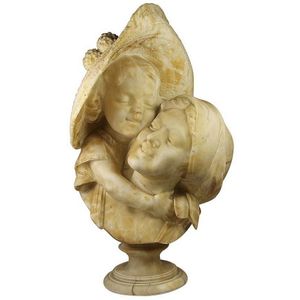Ming Dynasty Jade Buddhist Lion and Cub Group
You must be a subscriber, and be logged in to view price and dealer details.
Subscribe Now to view actual auction price for this item
When you subscribe, you have the option of setting the currency in which to display prices to $Au, $US, $NZ or Stg.
- Circa - A Latin term meaning 'about', often used in the antique trade to give an approximate date for the piece, usually considered to be five years on either side of the circa year. Thus, circa 1900 means the piece was made about 1900, probably between 1895 and 1905. The expression is sometimes abbreviated to c.1900.
- Ming Dynasty - The Ming Dynasty was a ruling dynasty of China from 1368 to 1644. It succeeded the Yuan Dynasty and preceded the Qing Dynasty. The Ming Dynasty was established by Zhu Yuanzhang, a former Buddhist monk who became a rebel leader and eventually overthrew the Mongol Yuan Dynasty. During the Ming Dynasty, China experienced a period of relative stability and prosperity. The government was centralized and bureaucratic, with the emperor at the top of the hierarchy. The Ming Dynasty is known for its cultural achievements, including the development of porcelain, the invention of movable type printing, and the construction of the Great Wall of China.
This item has been included into following indexes:
Visually similar items

A carved stone carving of a Bodhisattva and qilin, he reclines resting his arms upon a low table, the qilin sits beside him, light caramel coloured stone. Width 18 cm

Alabaster mother & child bust figure group on an alabaster stand, some chips. Height 65 cm

A jade carving of Toad with Scorpion 9 cm wide

A jade figure of a mythical beast the recumbent animal with head turned looking back over its hind quarters, with mouth open in snarling expression, and tufted tail curling up over its haunches, the greenish stone suffused with russet inclusions 7.5 cm
